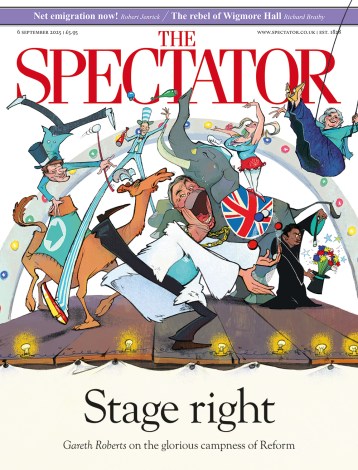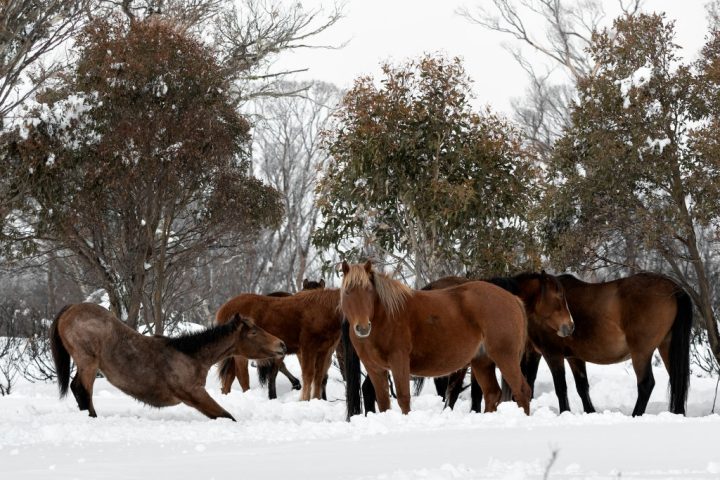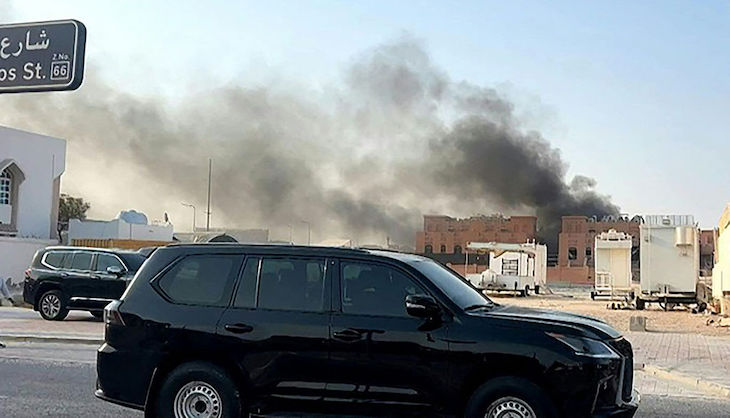A government-sanctioned programme to cull the brumby mobs of wild horses in Australia’s High Country has become a hot political issue in New South Wales and Victoria, the two states whose border is straddled by the Snowy Mountains. Immortalised in Australian literature through the famous 1890 bush ballad ‘The Man from Snowy River’, by the poet and journalist Andrew ‘Banjo’ Paterson, to many, these wild horses represent a living part of the Australian national legend.
Set in the Snowy Mountains, the poem tells the story of a posse of riders who chase down a mob of wild horses – brumbies – to recapture an escaped racehorse colt who has joined them. It’s a story that triggers pride in a great many Australians. It plays to our national self-image of ourselves as courageous, never-say-die individualists, laughing at danger and willing to take the greatest risks in pursuit of goals greater than oneself. Unsurprisingly, then, the two state governments’ decisions to cull these wild horses is controversial.
The Australians of Paterson’s epic poem, and the horses they celebrated, are not the Australians of today
For environmentalists, it’s a matter of sustainability. A brumby population in the tens of thousands has a profound impact on the terrain and the vegetation it supports; the culling programme is intended to reduce numbers from over 20,000 to around 3,000. Environmental zealots oppose even this drastic reduction, and want the brumbies exterminated altogether. In 2021, 69 scientists signed an open letter to the responsible New South Wales minister, declaring ‘to protect the native Australian plants, animals and ecosystems of Kosciuszko National Park, and other national parks affected by feral horses in NSW, such as Barrington Tops, Guy Fawkes, Oxley Wild Rivers and Blue Mountains National Parks, we recommend a goal of removing all feral horses from NSW protected areas’. With the exception of those 3,000 horses, the cullers have got their way.
Opposing the cull, however, are people from High Country communities and their supporters, including animal cruelty activists. Their fight has involved costly court actions and, controversially, civil disobedience including harassing park rangers and shooters involved in the culls.
The anti-cull argument is simple. Thanks to Paterson and the legendary image of Australianness his ballad created, High Country brumbies are part of Australia’s cultural heritage. They roam in regions not wanted for farming or grazing, and few people actually visit the rugged terrain and blasted heaths the brumbies have made their own. Former conservative MP for the area, Peter Cochran, recently told the Times that ‘over a couple of hundred years, a cultural identity was established in the Snowy Mountains connected to the image of “The Man from Snowy River”. And the brumbies played an important part in it.’
It’s a head versus heart issue. The head says brumby numbers are unsustainable and the cull must proceed. The heart says that shooting these beautiful horses is to shoot the Australian character they represent.
But there’s the rub. Contrary to claims the cull has divided Australia, outside the affected High Country, and a little bit of national and international news coverage, it’s barely registered on the wider public agenda.
The sad reality is that the Australians of Paterson’s epic poem, and the horses they celebrated, are not the Australians of today. Even when Paterson wrote it 135 years ago, it represented a legend of Australians as they wanted themselves to be, not what they were.
As we saw in the darkness of the Covid years, when Australia became the most repressed and locked-down nation in the Western world, modern Australians are not rugged individualists cocking snooks at authority. Rather, we are a nation of conformists, obsessed by political correctness and nanny state rules, and ever willing to comply with the most excessive and absurd public safety instructions if they are decreed by lawful authority. There would be no 2024 ‘Man from Snowy River’: occupational health and safety officers would put paid to that.
What’s more, the chattering classes and the anti-colonialists in our midst condemn the sentimental Paterson-inspired imagery. They prefer to see the brumbies as symbols of the colonial destruction of pristine habitats and lives of the Aborigines who lived and hunted there. If you accept this ideological nonsense, why vandalise statues of Captain Cook or, this week, George V when we can cull living relics of the white man’s settlement?
If the country inhabited by brumbies is so harsh and unforgiving, exterminating all these beautiful horses for the sake of the environment is going too far. Let them roam, but in numbers that are both manageable and sustainable, including ensuring sufficient forage for the surviving horses themselves. Shooting them is undeniably brutal and cruel, but the slow death of thousands of horses by starvation in overgrazed countryside surely is worse.
But, alas, leaving the horses untouched simply to honour a sentimental, romantic allegory of a legendary Australia that existed only in Banjo Paterson’s vivid imagination and abandoned by modern Australia if, indeed, it ever existed at all, is not enough.







Comments